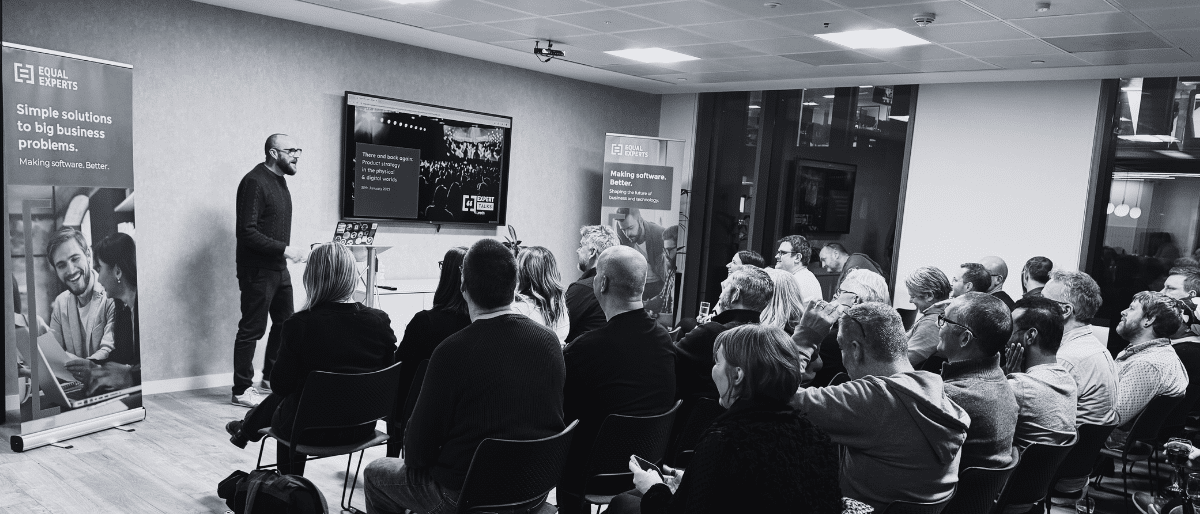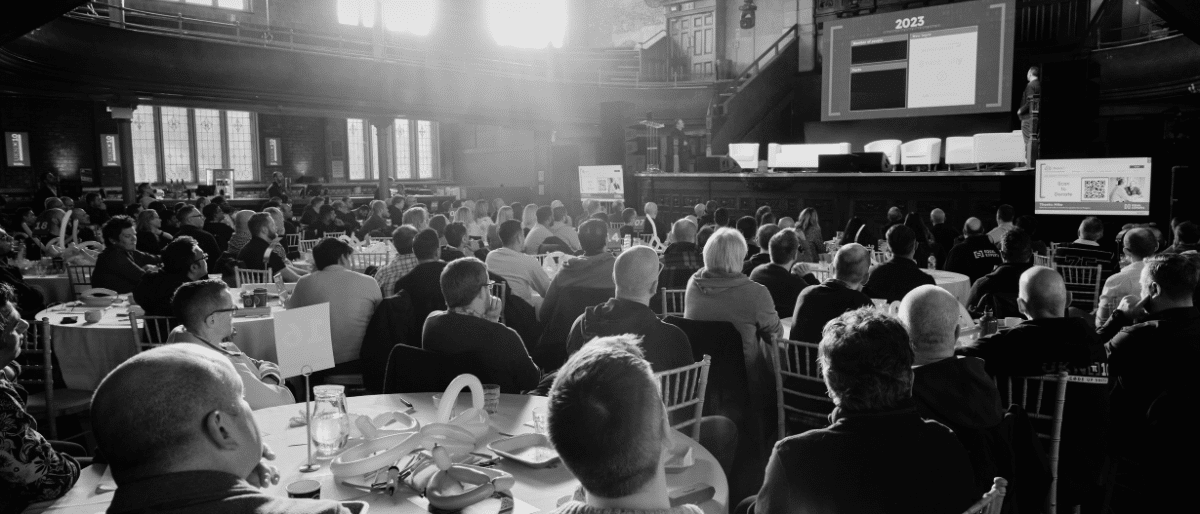Equal Experts is proud to be part of the tech community in Leeds. That community is lively, challenging, good-humoured and determined to look past hype and get to the bottom of how digital technology interacts with everyday experiences. All of those qualities were to the fore when technologists from across the region gathered for There and Back Again: Product Strategy in the Physical and Digital Worlds. It was our first in-person Expert Talks event in the north of England since the pandemic, and the energy in the room was testament to how much we’ve all missed these occasions.
The theme was well-timed. This is a moment when governments and businesses alike are proclaiming the value of Artificial Intelligence (AI) and digital innovation for transforming product and service delivery. As our speakers and attendees highlighted, however, any digital transformation initiative can only be truly effective when it accounts for physical realities. It’s in the interface between the digital and physical worlds that many transformation projects fall short. However, exploring how the two worlds combine can also be a source of genuinely innovative ideas.
Equal Experts Product Strategist David Cox kicked off proceedings by asking if anyone in the room could name an either purely physical or purely digital experience. Short of a farm shop selling its own produce to passers-by on a road for cash, it’s incredibly difficult to do. A tech giant like Meta has moved into the physical world with VR headsets. Even a pure SaaS company like Salesforce doesn’t really have a business without salespeople meeting face to face, and generating the data it runs on. Almost every business that transacts in-person relies on some form of digital infrastructure to support them. On a fundamental level, that suggests every product design task involves the art of integrating these two worlds.
Key insights on integrating digital and physical product strategies
The discussions at the Expert Talks event surfaced several crucial insights into how the physical world shapes digital experiences, and how the most innovative product strategies consider both. Here are some of the key takeaways from our speakers and attendees:
Optimising digital journeys in isolation means solving only half a problem
Investing in re-platforming the digital infrastructure for a wine business might enable all kinds of innovative customer experiences, like recommending vintages to go with different meals, or grape varietals to try based on what you’ve ordered in the past. However, such innovations deliver no value at all if the business can’t successfully deliver wine orders to customers – and that involves recognising and planning around very particular physical constraints. David Cox set out a range of these, including the number of bottles that can be safely transported in a case, the need for recipients to prove their age, and the fact that wine can’t be left on a doorstep. Digital product or service design that doesn’t take account of these realities must inevitably fail.
Rather than replicating the physical, ask what it exists for – and design for that
The harsh reckoning for many digital transformation projects is that, if a digital journey fails to deliver the experience that people expect, they will quickly fall back on a reassuring physical alternative. Maggie Walsh, now the Principal Product Manager CX for Autotrader, experienced this during her time working on transformation projects for the NHS. She explained how the users of a sophisticated NHS patient tracking system would quickly revert to sending traditional ‘Lloyd George’ manila envelopes around the country instead, creating a situation where digital and physical customer journeys needed to be managed in parallel.
For this reason, the true measure of a transformation initiative’s success isn’t the number of happy paths it creates, but the number of unhappy ones which cause users to revert to in-person alternatives.
One solution to avoiding unhappy paths is to design digital products and services that avoid trying to replicate the physical, and instead explore different ways to meet customers’ needs. That’s the approach Maggie and her Autotrader team took when the traditional car buying journey was disrupted by the pandemic, and test drives became impossible. Rather than trying to replace test drives with ambitious virtual or augmented reality driving experiences, they sought to provide the same reassurance for car buyers through vehicle guarantees and a passport showing a car’s history. The result was a smoother and more convenient car buying journey overall.
Physical experience doesn’t need to wait for the end of the journey
In most integrations of digital and physical customer journeys, the physical is the output of the digital. A user goes through several digital steps, which can feel unfamiliar and not particularly intuitive, in order to get the physical outcome they really want.
DEFRA’s Head of Product, John Steward, pointed to the value of an alternative approach: integrating the physical experience into the digital journey throughout. Doing so can often deliver a smoother experience overall. When the passport office re-designed its application process, enabling people to upload digital self-portraits rather than visiting a photo booth at their local supermarket, it removed one of the most time-consuming hurdles involved in the journey. It’s a prime example of combining digital and physical design to enhance, rather than constrain, one another.
If you’d like to explore ideas for more effective product strategy for the physical and digital worlds, Contact Equal Experts.




